- Home
- Prelims
- Mains
- Current Affairs
- Study Materials
- Test Series
31st Oct 2021
SWEDEN TO LAUNCH ‘TIME FOR INDIA’ CAMPAIGN IN NOVEMBER
Sweden is going to launch a trade promotion event– Time for India– to boost bilateral trade and hinted that the Swedish Government may take a more liberal post-COVID visa policy for India soon.


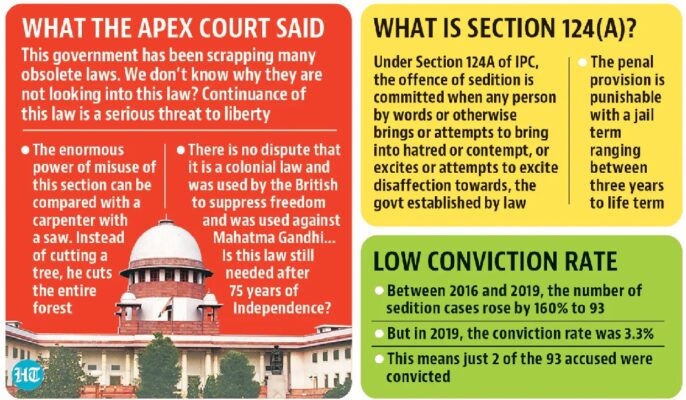
 The Court was constituted to pass this order due to the following compelling circumstances:
The Court was constituted to pass this order due to the following compelling circumstances:
 The terms of reference of the Committee are as follows:
The terms of reference of the Committee are as follows:
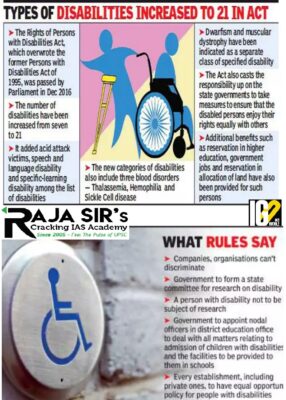
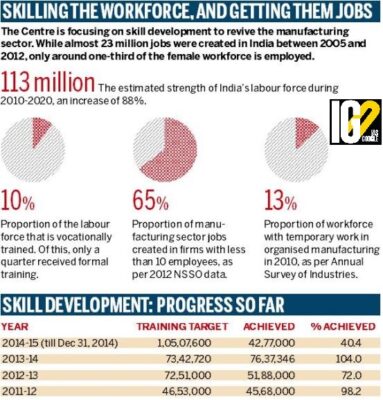




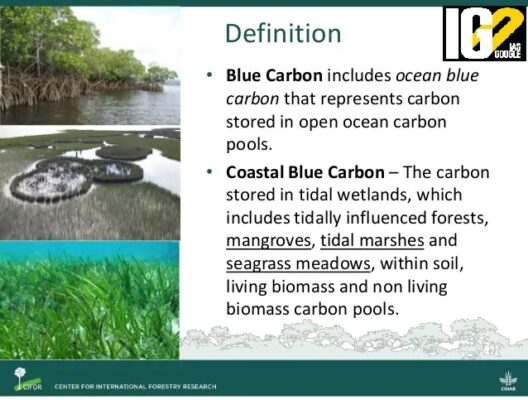
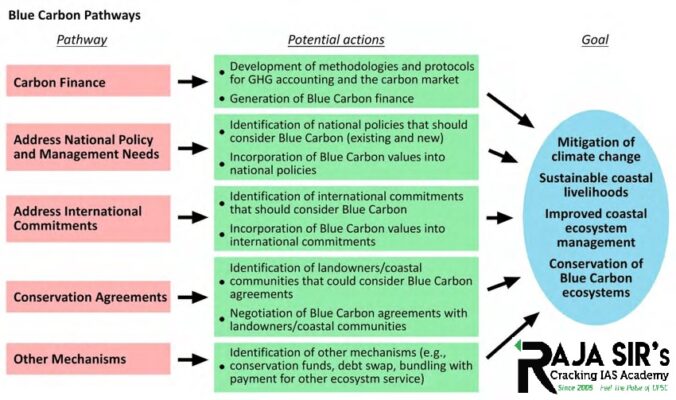
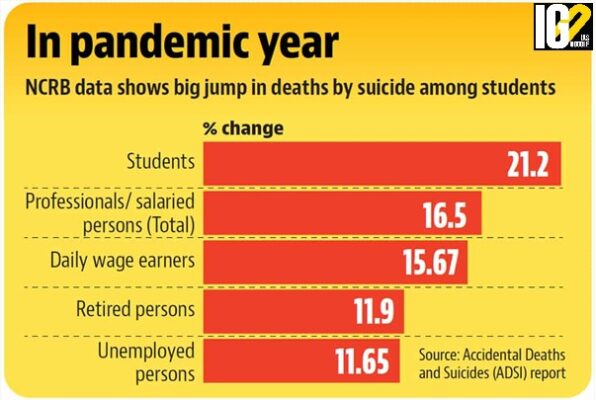
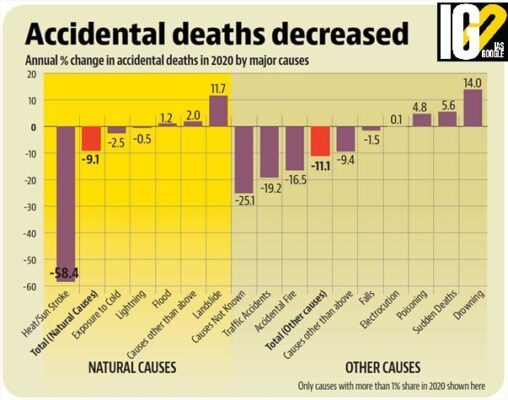
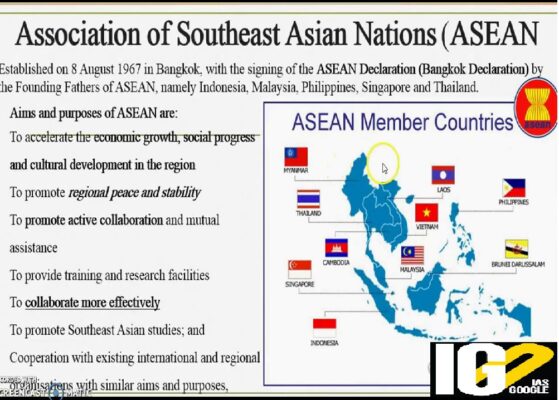
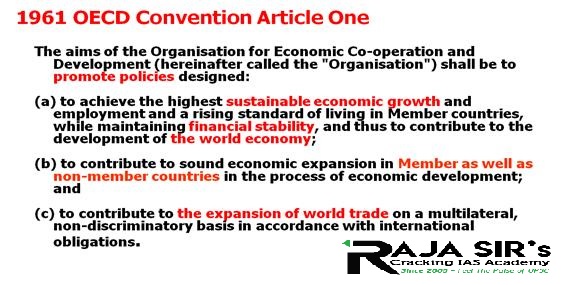
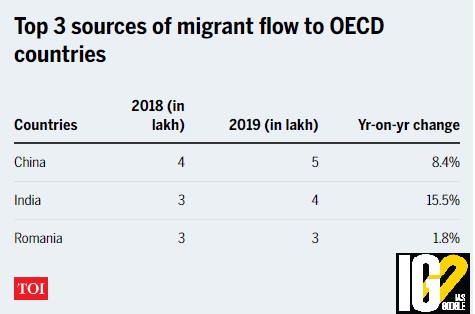
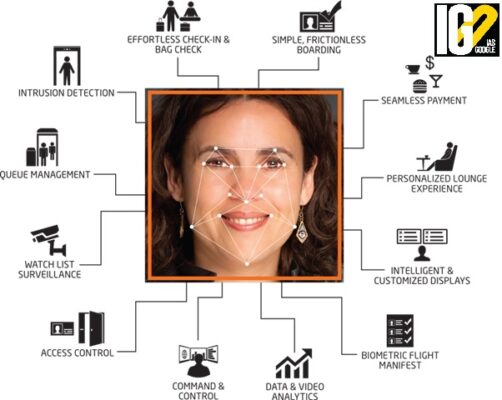

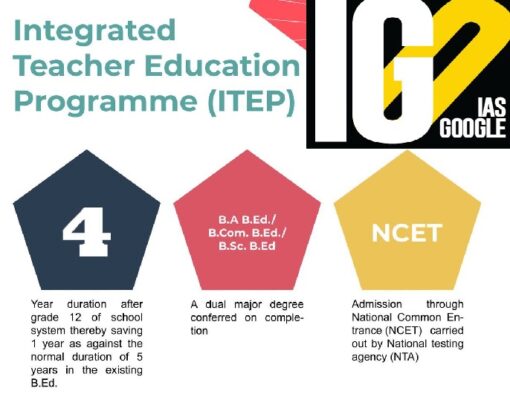
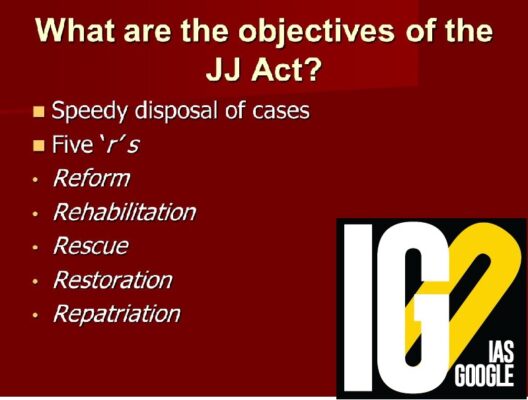

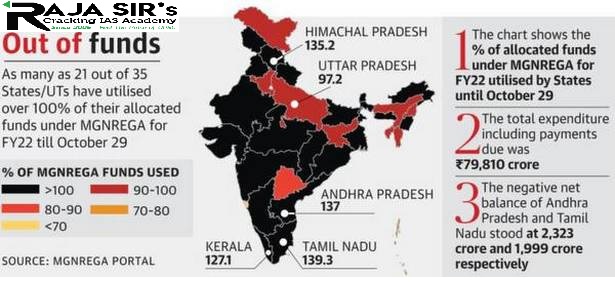 Mahatma Gandhi National Rural Employment Guarantee Act (MGNREGA):
Mahatma Gandhi National Rural Employment Guarantee Act (MGNREGA):
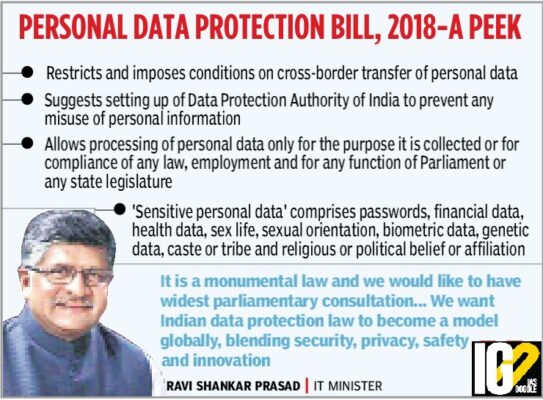
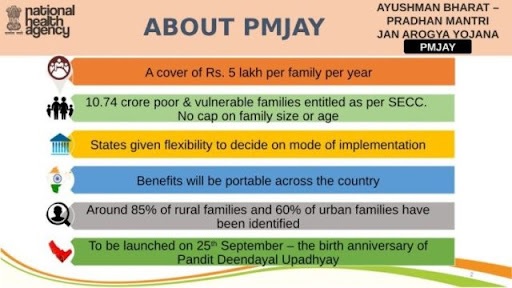
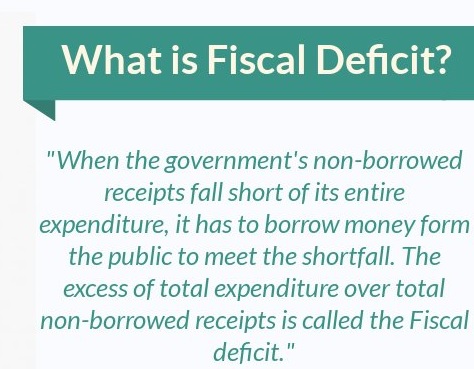

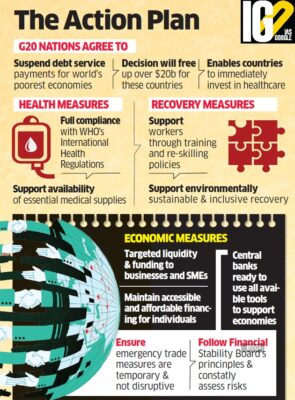 WHO gets its funding from two main sources: Member States paying their assessed contributions (countries’ membership dues), and voluntary contributions from Member States and other partners.
Assessed Contributions:
WHO gets its funding from two main sources: Member States paying their assessed contributions (countries’ membership dues), and voluntary contributions from Member States and other partners.
Assessed Contributions:
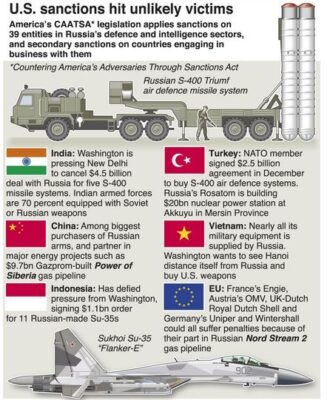
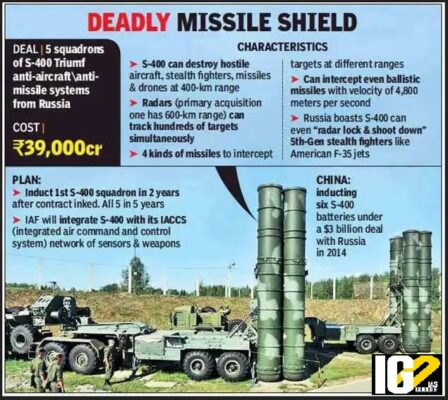
- It is a promotional campaign for Indian business.
- Sweden is allowing ‘essential’ travels from India which also includes certain types of travel by business owners.
- Sweden Ambassador in India has also said that it does not require vaccination from international travellers including those from India.
- The strain is believed to be behind the recent infection explosion in the United Kingdom.

- AY.4.2 is what’s termed a “lineage”. These are labels given to branches of the COVID evolutionary tree to illustrate their relatedness.
- AY. 4.2 variant is from the Delta Plus (B.1.617.2) family.
- AY.4.2 could possibly be even more transmissible than Delta, although there currently is no evidence suggesting that it caused more severe diseases or rendered vaccines ineffective.
- The defining change in AY.4.2 is the mutation A1711V, which affects the virus's Nsp3 protein, which plays a number of roles in viral replication. However, the impact of this mutation is unknown.
- The corona virus variants are overseen by the diligent Pango network, a joint team of researchers from the universities of Edinburgh and Oxford, who act as the custodians of lineages and handle the assignment of new ones.

- Section 124-A of IPC, also known as the Sedition Law, was introduced in 1870 by the British.
- It was originally drafted by Thomas Macaulay.
- It states that Whoever, by words, either spoken or written, or by signs, or by visible representation, or otherwise, brings or attempts to bring into hatred or contempt, or excites or attempts to excite disaffection towards, the Government established by law in [India].
- The law was first used to prosecute Bal Gangadhar Tilak in 1897. That case led to Section 124A of the IPC being amended, to add the words ‘hatred’ and ‘contempt’.
- After independence, the law was retained in the IPC, adding some further explanations.
- Example: Words or speech that incite people to rebel against the government or governing authority. Words that inspire a revolution that overthrows the government.

- Sedition is a non-bailable offence.
- Punishment under the law varies from imprisonment up to three years to a life term and fine.
- A person charged under this law can’t apply for a government job.
- They have to live without their passport and must present themselves in the court as and when required.
- Section 124A of the IPC has its utility in combating anti-national, secessionist and terrorist elements.
- Many districts in different states face a Maoist insurgency and rebel groups virtually run a parallel administration. These groups openly advocate the overthrow of the state government by revolution.
- Against this backdrop, the abolition of Section 124A would be ill-advised merely because it has been wrongly invoked in some highly publicized cases.
- It protects the elected government from attempts to overthrow the government with violence and illegal means.
- Section 124A is a relic of colonial legacy and unsuited in a democracy.
- It is a constraint on the legitimate exercise of constitutionally guaranteed freedom of speech and expression.
- The British, who introduced sedition to oppress Indians, have themselves abolished the law in their country. There is no reason, why should not India abolish this section.
- The terms used under Section 124A like ‘disaffection‘ are vague and subject to different interpretation to the whims and fancies of the investigating officers.
- Tara Singh Gopi Chand Vs Punjab (1951): Section 124A was indisputably a restriction on the freedom of speech and expression and invalidated the provision on the basis that:
- It was in contravention of the fundamental right of freedom of speech and expression under Article 19 of the Constitution of India.
- Debi Soren & Ors Vs Bihar (1954): upheld the validity of Section 124A, holding that the law does not violate Article 19.
- Ram Nandan Vs Uttar Pradesh (1958): Declared Section 124A void in that case and held the government must be ready to face a strong opposition apart from popular approval or disapproval.
- Kedar Nath (1962): upheld the validity of the sedition law under IPC, holding that the purpose of the crime of sedition was to prevent the government established by law from being subverted because “the continued existence of the Government established by law is an essential condition of the stability of the State”.
- The registration of all political parties is governed by the provisions of Section 29A of the Representation of the People Act, 1951.
- As per the Election Commission, any party seeking registration has to apply to the Commission within 30 days following the date of its formation.
- As per existing guidelines, the applicant is asked to publish a proposed party name in two national daily newspapers and two local daily newspapers
- The applicant is given two days for submitting objections if any, about the proposed registration of the party before the Commission within 30 days from the publication.
- An application for registration is to be submitted to the Secretary, Election Commission of India, in the proforma prescribed by the Commission
- Secure at least 6% of the valid vote in an Assembly or a Lok Sabha General Election in any four or more states and win at least 4 seats in a Lok Sabha General Election from any State or State.
- Win at least 2% of the total Lok Sabha seats in a Lok Sabha General Election and these seats have to be won from at least 3 states.
- The party is recognized as a State Party in at least four states.
- Secure at least 6% of the valid vote & win at least 2 seats in an Assembly General Election.
- Secure at least 6% of the valid vote & win at least 1 seats in a Lok Sabha General Election.
- Win at least 3% of the seats or at least 3 seats, whichever is more, in an Assembly General Election.
- Win at least 1 out of every 25 seats from a state in a Lok Sabha General Election.
- Secure at least 8% of the total valid vote in an Assembly or a Lok Sabha General Election.
 The Court was constituted to pass this order due to the following compelling circumstances:
The Court was constituted to pass this order due to the following compelling circumstances:
- Right to privacy and freedom of speech are alleged to be impacted, which needs to be examined.
- No clear stand taken by the Respondent-Union of India regarding actions taken by it.
- Seriousness accorded to the allegations by foreign countries and involvement of foreign parties.
- Possibility that some foreign authority, agency or private entity is involved in placing citizens of this country under surveillance.
- Allegations that the Union or State Governments are party to the rights' deprivations of the citizens.
- Limitation under writ jurisdiction to delve into factual aspects.
- For instance, even the question of usage of the technology on citizens, which is the jurisdictional fact, is disputed and requires further factual examination.
- Committees, which act as an agent of court, can take up a task of determining the facts, when they are disputed or unknown.
- Committees or fact-finding teams can summon individuals, prepare ground reports, and inform the court.
 The terms of reference of the Committee are as follows:
The terms of reference of the Committee are as follows:
- To enquire, investigate and determine:
- Whether the Pegasus suite of spyware was used on phones or other devices of the citizens of India to access stored data, eavesdrop on conversations, intercept information and/or for any other purpose.
- The details of the victims and/or persons affected by such a spyware attack.
- Whether any Pegasus suite of spyware was acquired by the Respondent Union of India, or any State Government, or any central or state agency for use against the citizens of India?
- If any governmental agency has used the Pegasus suite of spyware on the citizens of this country, under what law, rule, guideline, protocol or lawful procedure was such deployment made?
- Any other matter or aspect which may be connected, ancillary or incidental to the above terms of reference, which the Committee may deem fit and proper to investigate.
- Devise its own procedure to effectively implement and answer the Terms of Reference.
- Hold such enquiry or investigation as it deems fit.
- Take statements of any person in connection with the enquiry and call for the records of any authority or individual.
- Pegasus is spyware developed by the Israeli cyber arms firm NSO Group that can be covertly installed on mobile phones and other devices.
- It is a Trojan horse computer virus that can be sent "flying through the air" to infect cell phones.
- The spyware is named after Pegasus, the winged horse of Greek mythology.
- Pegasus is stated as intended to be used against criminals and terrorists.
- It can infect a device without the target’s engagement or knowledge, also called zero-click.

- The final guidelines would be issued after considering suggestions from public, as envisaged in the Rights of Persons with Disabilities Rules, 2017.
- Aim: To facilitate ease of air travel for persons with disabilities.
- The accessibility features to be provided by all airport operators, shall include
- Accessible parking and drop-off/pick up points with reserved parking for persons with disability.
- Accessible route like walkways, road crossings, help desk, check-in counter, security check area.
- Immigration and custom counter accessible by wheelchair.
- Aerobridge and ambulift, low floor buses and ramps.
- When screening passengers with prosthetics, the security personnel may use X-ray, ETD or visual screening depending on circumstances.
- The passenger will receive additional pat-down after being taken to a screening area, if necessary, screening through ETD (explosive trace detection) is adopted.
- A prosthetic appliance, which does not have any foam padding cover under which any weapon/explosive can be concealed and screened by visual inspection and ETD checks only.
- The justification for subjecting a prosthetic limb to X-ray screening shall be recorded by the screener in a register.
- Accessibility
- The public places are rarely made keeping in mind the comfort of people with disabilities.
- There are no ramps, or the hallways are too narrow for disabled people to move.
- Education
- Many children with disabilities remain out of school and thus they are deprived of basic education.
- Access to Healthcare
- With a population 1.3 billion, people do not have access to proper healthcare and the people with disabilities are worse off.
- People with intellectual disabilities are often mistreated by the health workers.
- Lack of Employment
- When disabled people are deprived of basic education, they are bound to fall behind other candidates for various job opportunities.
- Discrimination
- Disabled people face discrimination in everyday life.
- People suffering from mental illness or mental retardation face the worst stigma and are subject to severe social exclusion.

- DDU-GKY is a part of the National Rural Livelihood Mission (NRLM).
- It was announced on 25 September 2014 celebrated on the occasion of Antyodaya Diwas.
- Aim: Transform rural poor youth into an economically independent and globally relevant workforce and to enable Poor and Marginalized to Access Benefits.
- Mandatory coverage of socially disadvantaged groups (SC/ST 50%; Minority 15%; Women 33%).
- Shifting Emphasis from Training to Career Progression.
- Post-placement support, migration support and alumni network.
- Guaranteed Placement for at least 75% trained candidates.
- Nurturing new training service providers and developing their skills.
- Greater emphasis on projects for poor rural youth in Jammu and Kashmir (HIMAYAT),
- The North-East region and 27 Left-Wing Extremist (LWE) districts (ROSHINI)
- Rural Youth: 15 - 35 Yrs.
- SC/ST/Women/PVTG/PWD: up to 45 Yrs.

- The Centre plans to free up 15,000 acres of land, currently used as dumping sites, and provide 24x7 water supply to households in 500 cities across India in the second phase of Swachh Bharat Mission and AMRUT.
- Government of India, in partnership with States/UTs and ULBs, is committed to make all cities ‘Garbage Free’ and ‘Water Secure’, in order to contribute to the achievement of the Sustainable Development Goals (SDG) 2030.
- This will ultimately improve the quality of life and ease of living of urban populations, thus leading to urban transformation.
- SBM-U 2.0 envisions to ensure grey and black water (used water) management in all cities other than those covered under AMRUT, making all urban local bodies ODF+ and those with a population of less than 1 lakh as ODF++, and Water+.
- By ensuring that no untreated used water is discharged in open to pollute water bodies, thus achieving the vision of safe sanitation in urban areas.
- The Mission will focus on source segregation of solid waste, utilizing the principles of 3Rs (reduce, reuse, recycle), scientific processing of all types of municipal solid waste and remediation of legacy dumpsites for effective solid waste management.
- The Mission has revolutionized the sanitation space in urban India by building over 70 lakh household, community and public toilets, thus providing safe and dignified sanitation solutions for all.
- The Mission has prioritized the needs of women, transgender communities, and persons with disabilities (Divyangs).
- The thrust on scientific waste management is evident with waste processing in India going up by over four times from 18% in 2014 to 70% today.
- This has been aided through 100% door-to-door waste collection in 97% wards and source segregation of waste being practised by citizens across 85% wards.
- In the spirit of “Transformation to Saturation”, Prime Minister launched AMRUT 2.0 on 1 October, 2021.
- AMRUT, first focused water Mission was launched in June 2015 in 500 cities.
- AMRUT 2.0 is a step towards achieving water secure cities to support the spirit of AatmaNirbhar Bharat.
- ATAL MISSION FOR REJUVENATION AND URBAN TRANSFORMATION (AMRUT) 2.0 targets providing household water tap connections in statutory towns and household coverage of sewerage/septage services in 500 AMRUT cities.
- Under AMRUT 2.0, cities will submit City Water Balance Plans (CWBPs) online on a robust Mission portal of MoHUA.
- CWBPs will give the status of water availability, water demand and supply in the city culminating in gaps in services.
- With target of filling theses gaps projects will be formulated in from of City Water Action Plan. These plans will be aggregated at State level in form of State Water Action Plan (SWAP).
- Mission mandates implementation of 10% worth of funds allocated to million plus cities in PPP mode.
- Taking up projects on 24x7 water supply in 500 AMRUT cities which have population above one lakh is encouraged.
- Pey Jal Survekshan: Assess quality and quantity of water supplied to the citizens and will instill healthy competition among cities to provide better water related services to the citizens.
- Information, Education & Communication (IEC): Targets to convert water conservation into a Jan Aandolan.
- Technology sub-Mission: Start-ups in water sector will be encouraged through this mission.
- Capacity Building: Impart training to elected representatives, Municipal functionaries and larger audience comprising contractors, managers, plumbers, plant operators, workmen, consultants, students, women, and citizens.
- Funding will be done to the States and Union Territories for project implementation, Administrative & Other Expenses.
- Project funds will be released in three instalments of 20:40:40.
- Implementation of reforms on Property Tax and user charges is mandatory to get uninterrupted funding from third year onwards.
- Cities will submit City Aquifer Management Plans with focus on maintaining positive ground water balance in aquifers.
- Mission will also fund the outcomes achieved through sources other than AMRUT.
- Reducing non-revenue water to below 20%;
- Recycle of treated used water to meet at least 20% of total city water demand and 40% for industrial water demand at State level;
- 24x7 water supply with ‘Drink from tap’ facility;
- Rejuvenation of water bodies;
- GIS based master plans of the cities & efficient town planning;
- Credit rating of cities and raising funds through issuance of municipal bonds.

- NFI is launched with a view to promote rational use of medicines in the country.
- It would act as a guidance document for all the healthcare professionals such as clinicians, pharmacists, nurses, dentists while prescribing the medicines to the patients.
- The NFI is aligned with the National Health Programmes and National List of Essential Medicines (NLEM).
- Formulary is a manual containing clinically oriented summaries of pharmacological information about selected drugs.
- The manual may also include administrative and regulatory information pertaining to the prescribing and dispensing of drugs.
- A national formulary generally concentrates on available and affordable medicines that are relevant to the treatment of diseases in a particular country.
- The first, second and third editions of National Formulary of India (NFI) were published in 1960, 1966 and 1979 respectively by the Ministry of Health, Government of India.
- A pharmacopoeia, in its modern technical sense, is a book containing directions for the identification of compound medicines, and published by the authority of a government or a medical or pharmaceutical society.
- Descriptions of preparations are called monographs. In a broader sense it is a reference work for pharmaceutical drug specifications.
- These included The Canon of Medicine of Avicenna in 1025, and works by Ibn Zuhr in the 12th century and Ibn Baytar in the 14th century.
- The Shennong Ben Cao Jing is the earliest known Chinese pharmacopoeia.
- The text describes 365 medicines derived from plants, animals, and minerals; according to legend it was written by the Chinese god Shennong.
- Pharmacopeial synopsis were recorded in the Timbuktu manuscripts of Mali.
- Indian Pharmacopoeia Commission (IPC) is an Autonomous Institution of the Ministry of Health and Family Welfare, Government of India.
- The IPC was formed according to the Indian Drugs and Cosmetics Act of 1940 and established by executive orders of the Government of India in 1956.
- IPC is created to set standards of all drugs that are manufactured, sold and consumed in India.
- To update regularly the standards of drugs commonly required for treatment of diseases prevailing in this region.
- Publish official documents for improving quality of medicines by way of adding new and updating existing monographs in the form of Indian pharmacopoeia (IP).
- Promote rational use of generic medicines by publishing national formulary of India.
- Prescribe standards for identity, purity and strength of drugs essentially required from health care perspective of human beings and animals.
- Provide IP reference substances (IPRS) which act as a finger print for identification of an article under test and its purity as prescribed in IP.
- It will help the States and Union Territories in planning their public expenditure among other things, for improving health infrastructure and taking up infrastructure projects.
- It will help States avoid a bunching up of spending plans towards the end of the year and should help to compress the size of the State Development loan auctions in the immediate term leading to a modest cooling of bond yields.

- The Constitution (One Hundred and First Amendment) Act, 2016, was the law which created the mechanism for levying a nationwide GST with a provision to compensate the States for loss of revenue arising out of implementation of the GST.
- The adoption of the GST was made possible by the States ceding almost all their powers to impose local-level indirect taxes and agreeing to let the prevailing multiplicity of imposts be subsumed under the GST.
- The revenue shortfalls arising from the transition to the new indirect taxes regime would be made good from a pooled GST Compensation Fund for a period of five years that is set to end in 2022.
- This corpus in turn is funded through a compensation cess that is levied on so-called ‘demerit’ goods such as sin and luxury goods which include pan masala, tobacco, aerated water and luxury cars.
- Option 1 entails the States selling debt securities in the market to raise the ₹97,000 crore.
- The Centre will endeavor to keep the interest cost on these borrowings at or close to the yield on G-Sec (bonds issued by the Government of India)
- In the event of the cost being higher, bear a part of the difference through a subsidy.
- Option 2 allows the States to sell debt in the market to raise the entire ₹2.35 lakh crore shortfall but with the terms of the borrowing being far less favorable.
- The interest cost would have to be borne by them with only the principal being serviced by the Compensation Fund.

- Several States, have rejected the options and made clear that the onus is on the Centre to borrow from the market to make good any shortfall in the Compensation Fund.
- They argued that the States had agreed to the implementation of the GST only on the basis of the “unequivocal commitment given by the Government of India to compensate the States for any revenue loss”.
- The Centre made a departure from its stance that States should undertake market borrowings to bridge the ₹1.1 lakh crore of GST compensation shortfall.
- The Government of India will undertake the required borrowings in tranches and pass it on to States as a ‘back-to-back loan’ that will reflect on their own books.
- This will not have any impact on the fiscal deficit of the Government of India (GOI).
- The amounts will be reflected as the capital receipts of the State Governments and as part of financing of its respective fiscal deficits

- Blue carbon is the carbon stored in coastal and marine ecosystems.
- Coastal ecosystems store more carbon per unit area than terrestrial forests.
- If the stored carbon is released due to damaged ecosystem, it will result in emission of carbon dioxide.
- It would contribute to climate change.
- Four UNESCO sites that have the highest blue carbon except Sundarbans-
- the Bangladeshi portion of the Sundarbans
- Great Barrier Reef in Australia
- Everglades National Park in the United States
- the Banc d’Arguin National Park in Mauritania

- It reduces the negative impact of climate change.
- Coastal ecosystem can trap carbon for long periods of time.
- It assimilates pollutants which helps to improve water quality.
- It prevents eutrophication.
- Eutrophication is an excessive nutrient in a lake or other body of water caused by runoff of nutrients.
- It provides jobs to local people by improving the health of fisheries ecosystem.
- It will improve tourism industry.
- It is a vast mangrove forest ecosystem in the coastal region of Bay of Bengal.
- It is a tiger reserve as well as a biosphere reserve.
- Location- It is spread over India and Bangladesh on the delta of the Ganges, Brahmaputra and Meghna rivers.
- Legal Status-
- It was established as National Park in 1984.
- It was recognised as the ‘Wetland of International Importance’ under the Ramsar Convention in January 2019.
- International Status-
- It was declared as UNESCO World Heritage site in 1987.
- It was designated as a Biosphere Reserve by UNESCO in 2001.
- Flora-
- Genwa, Kankra, Khalsi, Dhundal, Passur, Garjan, Sundari, Goran, Kankara.
- Fauna-
- It is a home to 428 species of birds, Estuarine Crocodile, Royal Bengal Tiger, Water Monitor Lizard, Gangetic Dolphin and Olive Ridley Turtles.
- Discovery India and World-Wide Fund (WWF) India have partnered with the Government of West Bengal
- Aim: to save the world’s only mangrove tiger habitat.
- Project CAT (Conserving Acres for Tigers)
- Aim: To double the number of tigers in the wild by 2022.
- The report covers the period from January to December 2020.

- There was a sharp rise in the number of deaths by suicides, students and small entrepreneurs saw the biggest jump.
- There were 153,052 deaths by suicides, the highest since 1967.
- The number of deaths by suicide, was 11.3% in 2020.
- This is the highest rate in the last 10 years. It was 11.4% in 2010.
- Students committed suicide due to inability to access resources to continue their education online.
- 29 million students did not have access to digital devices in India.
- Students, who make up 7%-8% of deaths by suicide every year, registered a 21.2% increase in 2020.
- Professionals or salaried persons (16.5%) and daily wage earners (15.7%) saw the second and third largest increase, respectively.
- Small businessmen suffered more than salaried professionals. Deaths by suicide of vendors and tradesmen increased by 26.1% and 49.9% respectively.

- Poverty (69%) and unemployment (24%) registered the biggest increase.
- Drug abuse, alcohol addiction (17%), illness (16%), and family problems (14%).
- Suicide due to failure in examination declined by 24%. But due to professional/career problem increased by 11%.
- There were 374,397 accidental deaths in 2020. This is the lowest number since 2009 which was 357,021.
- The accidental deaths, of which traffic accidents are about 40%, declined by 11%, in 2020.
- Number of deaths due to natural causes declined by 9.1%,
- Deaths due to sunstroke fell by 744 between 2019 and 2020
- Drowning, sudden deaths, and poisoning were the only non-natural causes of deaths where there was an increase in 2020 compared to 2019.
- Deaths by floods increased from 948 to 959.
- The Government of India has launched the National Mental Health Programme (NMHP) in 1982.
- Prevention and treatment of mental and neurological disorders and their associated disabilities.
- Use of mental health technology to improve general health services.
- Application of mental health principles in national development to improve quality of life.
- Treatment of Mentally ill
- Rehabilitation
- Prevention and promotion of positive mental health.
- It will ensure availability and accessibility of minimum mental health care for the most vulnerable and underprivileged sections of population.
- It will promote community participation in the mental health services development.
- This will lead to stimulate efforts towards self-help in the community.
- To provide sustainable basic mental health services to the community.
- Early detection and treatment of patients within the community itself.
- To reduce the stigma of mental illness through public awareness.
- To treat and rehabilitate mental patients within the community.
- During the Addressing of the India-ASEAN Summit, the Prime minister of India said India's Indo-Pacific Oceans Initiative (IPOI) and ASEAN's Outlook for the Indo-Pacific are the framework for their shared vision and cooperation in the Indo-Pacific region.

- It is an economic union comprising 10 member states in Southeast Asia, which promotes intergovernmental cooperation and facilitates economic, political, security, military, educational, and sociocultural integration between its members and other countries in Asia.
- Group of Countries: Brunei, Cambodia, Indonesia, Laos, Malaysia, Myanmar, Philippines, Singapore, Thailand, and Vietnam.
- Establishment: 8 August 1967
- Aim:
- To accelerate economic growth and through that social progress and cultural development.
- To promote regional peace and stability based on the rule of law and the principle of the United Nations charter.
- Headquarters: Jakarta, Indonesia.
- Fundamental principles:
- Mutual respect for the independence, sovereignty, equality, territorial integrity, and national identity of all nations;
- The right of every State to lead its national existence free from external interference, subversion, or coercion;
- Non-interference in the internal affairs of one another;
- Settlement of differences or disputes in a peaceful manner;
- Renunciation of the threat or use of force;
- Effective cooperation among themselves.

- Covid-19 crisis caused the sharpest drop of more than 30% in permanent migration flows to the OECD countries.
- In 2019, the permanent migration stood at 53 lakhs.
- India ranks second origin country for migrants to OECD in 2018-2019.
- Nearly 4 lakh Indians migrated to OECD countries during 2019.
- Migration from India represents about 6% of the overall migration to OECD countries.
- There were 3.94 lakh migrants from India to these countries in 2019.

- Indian students were the second largest cohort, after China, in the OECD countries.
- In 2019, 60% of the 3.7 million holders of study permits came from Asia particularly China (25%), India (9%) and Vietnam (3%).
- 2.93 lakh Indian students went to the OECD countries for education with student visas.
- China continued to retain its top slot as the largest source country of new immigrants, followed by India
- Nearly 1.56 lakh Indians acquired citizenship of an OECD country during 2019.
- The Organisation for Economic Co-operation and Development (OEEC) was established in 1961.
- Headquarters: Parsi, France.
- Member Countries: 38
- India is 27th member of the OECD Development Centre.
- OECD members are democratic countries that support free-market economies.
- It is known as a statistical agency, as it publishes comparable statistics on a wide number of subjects.
- To promote economic and social well-being of people around the world.
- To stimulate economic progress and world trade.
- To provide a forum in which governments can work together and seek solutions to common problems.
- Restore confidence in markets and the institutions that make them function.
- Re-establish healthy public finances as a basis for future sustainable economic growth.
- Foster and support new sources of growth through innovation environmentally friendly “Green Growth” strategies.
- It maintains a “blacklist” of nations that are considered uncooperative tax havens.
- It helps to eradicate tax avoidance by profitable corporations.
- It encourages the G-20 countries to promote tax reforms.

- It is a way of recognizing a human face through technology.
- It uses biometrics to map facial features from a photograph or video.
- The camera detects and locates the image of a face.
- An image of the face is captured and analysed.
- Converting the image to data.
- Finding a match.
- Mobile phone makers in products.
- Colleges in the classroom.
- Social media companies on websites.
- Retailers in stores.
- Airlines at departure gates.
- Law enforcement agencies.
- To track down missing people.
- To identify criminals.
- Making flying safer from criminals and threats.
- Faster processing.
- It is a threat to privacy.
- Criminals can trick facial recognition by wearing masks or facial disguises.
- Government can mistakenly identify a person as criminal.
- Aging lowers its effectiveness.
- High infrastructural costs.
- Massive data storage.
- A metal-free porous organic polymer is designed in such a way that it will be able to absorb visible light and catalyze the CO2 reduction reaction as well.

- There are some key requirements of a photo-catalyst to convert CO2 into value-added products. They include light-harvesting property, charge carrier (electron-hole pair) separation proficiency, and presence of proper electronically aligned conduction band.
- Thus, it is a challenge to reduce CO2 to CH4 selectively and efficiently.
- Only a handful of catalysts are able to reduce CH4 selectively and efficiently, and most of them contains metal counterparts which are toxic and expensive.
- A donor (tris-4-ethynylphenylamine)-acceptor (phenanthaquinone) assembly via C-C coupling to form a robust and thermally stable conjugated micro porous organic polymer was prepared which was utilized as a heterogeneous catalyst.
- The keto group present in phenanthraquinone moiety acted as a catalytic site in contrast with other conventional metal-based catalysts where the metal counterpart carries out the CO2 reduction reaction (CO2RR).
- During the catalysis process, first, the chemical called the conjugated microporous polymer (CMP) could uptake CO2 onto its surface due to its high CO2 intake capability at room temperature, converting it into methane as a value-added product.
- The synergistic push-pull effect between the electron-rich donor and electron-deficient acceptor facilitated efficient electron-hole separation, enhancing electron transfer kinetics and assisting in efficient catalysis.
- Methane (CH4) is a hydrocarbon that is a primary component of natural gas.
- Methane is also a greenhouse gas (GHG), so its presence in the atmosphere affects the earth’s temperature and climate system.
- Methane is emitted from a variety of anthropogenic (human-influenced) and natural sources.
- Anthropogenic emission sources include landfills, oil and natural gas systems, agricultural activities, coal mining, stationary and mobile combustion, wastewater treatment, and certain industrial processes.
- Methane is the second most abundant anthropogenic GHG after carbon dioxide (CO2), accounting for about 20 percent of global emissions.
- Methane is more than 25 times as potent as carbon dioxide at trapping heat in the atmosphere.
- Unlike other GHGs, methane can be converted to usable energy. Capturing and using methane offers opportunities to generate new sources of clean energy and mitigate global climate change.
- Methane (CH4) could have significant uses as the cleanest burning fossil fuel and can directly be used in fuel cells as a hydrogen carrier.
- It has the potential to replace coal for electricity generation and furnishing flexible supply to reinforce intermittent renewable generators.
- Theme of the dialogue: “AI for Date Driven Governance”
- Aim: Covering the importance of data driven and AI-enabled governance along with the global best practices.
- It is an initiative of the Ministry of Electronics & IT.
- It is a series of panel discussions involving various global and domestic leaders from the Government and industry, researchers and academicians sharing their views & experiences around Artificial Intelligence.
- The ‘AI for Data Driven Governance’ session involved experts speaking about leveraging AI for Public Sector, Defence and Security, Postal Services and Future Cities.
- There will also be a presentation on important AI-driven solutions that have played a significant role during the difficult times of the COVID-19 pandemic.
- ICGS Sarthak will be based at Porbandar, Gujarat and will operate on India’s Western Seaboard under the Operational and Administrative Control of the Commander, Coast Guard Region (Northwest).
- The 105-metre long ‘Sarthak’ is indigenously built and is fourth in the series of five offshore patrol vessels (OPVs) being built by Goa Shipyard Limited for the ICG.
- It is powered by two 9100 kilowatt diesel engines, the vessel is capable of attaining a top speed of 26 knots.
- Being fitted with state-of-the-art equipment, machinery, sensors and weapons enables the vessel to function as a command platform and undertake mandated Coast Guard charter of duties including search and rescue, combating maritime crimes, preserving and protecting the marine environment.
- According to the National Education Policy (NEP), it will become a mandatory requirement for recruitment of school teachers by 2030.
- As a pilot project in 2022-23, the programme will initially be offered in 50 selected multi-disciplinary institutions.

- Admissions to the programme will be carried out by the National Testing Agency through the National Common Entrance Test (NET).
- The curriculum, designed by the National Council for Teacher Education, will enable student-teachers to get a degree in education in a specialised discipline such as history, mathematics, science, arts, economics, or commerce.
- Students will walk out of the four-year programme with a B.Ed along with a B.A., B.Sc or B.Com degree.
- By 2030, the minimum degree qualification for teaching will be a 4-year integrated B.Ed. degree that teaches a range of knowledge content and pedagogy and includes strong practicum training in the form of student-teaching at local schools.

- Juvenile justice amendment Bill, 2021, which seeks to amend the 2015 law, was passed in both Houses of Parliament earlier this year.
- District Magistrate (DMs) and Additional District Magistrate (ADMs) will:
- Oversee actions taken concerning child marriage cases in their respective districts.
- Oversee childcare institutions and welfare of children in need of care.
- Facilitate action for education and awareness regarding the impact of child marriage on children.
- Child Welfare Committee (CWC) will now furnish data relating to children declared legally free for adoption and cases pending decision to DMs and online.
- Childcare institutions or specialised adoption agencies housing children who have been declared legally free for adoption have to submit reports to the DM.
- DMs will be responsible for issuing no-objection certificates in all cases of inter-country adoptions in the form of Indian missions abroad and immigration authorities of India and the receiving country of the child about inter-country adoption cases.

- Legal Act: Care and Protection of Children Act 2000 and 2015.
- Rule: Any child below the age of 7 years can not be convicted of any crime because of the doctrine of Doli incapax which means incapable of forming the intent to commit a crime.
- Objective: To rehabilitate young offenders and give them a second chance.
- The Juvenile Justice System in India is made based on three main assumptions:-
- Young offenders should not be tried in courts, rather they should be corrected in all the best possible ways.
- They should not be punished by the courts, but they should get a chance to reform.
- Trial for the child in conflict with law should be based on non-penal treatment through the communities based upon the social control agencies e.g. Observation Homes and Special Homes.
- In every district, the district magistrate and the additional district magistrate will get the power to monitor functions of agencies responsible for the implementation of the Act.
- This includes the Child Welfare Committees (CWC), the Juvenile Justice Boards, the District Child Protection Units and the Special juvenile Protection Units.
- The district child protection unit will also function under the district magistrate.
- Before becoming a member of the CWC, background and educational qualification checks will be included.
- The DM will conduct its capacity and background check and then submit the recommendations to the state government.
- The DM can independently evaluate a specialised CWC, juvenile police unit and registered institutions.
- DM’s are also responsible for ensuring that Child Care Institutions (CCIs) falling in their district are following all norms and procedures.
- Child victims of trafficking and drug abuse and those abandoned by their guardians will be included in the definition of “child in need of care” and protection.
- One more category will be included that offences where the sentence is more than seven years shall be treated as serious offences under the Act.
- DM will also now be in charge of sanctioning adoptions, removing the lengthy court process.
- The Juvenile Justice act of 2015 replaced the Juvenile Justice act of 2000.
- Permits child in conflict with law between the ages of 16-18 years to be tried as adults for heinous offences.
- Any 16-18 years old, who commits a lesser serious offence, may be tried as an adult only if he is apprehended after the 21 years.
- Creation of Institution of Juvenile Justice Boards (JJB) and Child Welfare Committees (CWC) in each district.
- JJB - conduct a preliminary inquiry to determine whether a juvenile offender is to be sent for rehabilitation or be tried as an adult.
- CWC - determine institutional care for children in need of care and protection.
- Laws on adoption procedures for an orphan, abandoned and surrendered children.
- Central Adoption Resource Authority (CARA) was granted the status of a statutory body.
- Inclusion of Penalties for cruelty against a child, offering a narcotic substance to a child, and abduction or selling a child.
- All Child Care Institutions (run by State Government/voluntary/NGO) to be mandatorily registered under the Act within 6 months from the date of commencement of the Act.
 Mahatma Gandhi National Rural Employment Guarantee Act (MGNREGA):
Mahatma Gandhi National Rural Employment Guarantee Act (MGNREGA):
- It is the Indian labour law.
- Aim: To guarantee the 'right to work'.
- Act passed: 23 August 2005
- Objectives:
- To guarantee a member of rural household hundred days of wage employment in a financial year to do unskilled manual work.
- Legal Right to Work
- Wages are paid under the Minimum Wages Act 1948.
- Demand-Driven Scheme
- Right to get unemployment allowance if employment is not provided within 15 days of submitting the application.
- To reduce urban migration from rural areas.
- To create rural infrastructure by using rural labour.
- Eligibility:

- The applicant should be the Citizen of India.
- Applicant has completed 18 years of age at the time of application.
- The applicant must be part of a local household.
- Applicant must volunteer for unskilled labour.
- Implementation:
- Gram Panchayats implement the programmes.
- Gram Sabha and the Gram Panchayat approves the shelf of works.
- Funding:
- Funding is shared between the centre and the states.
- There are three major items of expenditure – wages (for unskilled, semi-skilled and skilled labour), material and administrative costs.
- The central government bears 100% of the cost of unskilled labour, 75% of the cost of semi-skilled and skilled labour, 75% of the cost of materials and 6% of the administrative costs.
- Challenges of MGNREGA:
- Inadequate Funding
- Delay in Payment of wages.
- Existence of fake job cards
- Delay in the completion of work
- The authority is already being governed by the Aadhaar Act and there cannot be duplicity of laws.

- The Unique Identification Authority of India is a statutory authority established under the provisions of the Aadhaar Act, 2016.
- It is established under the Ministry of Electronics and Information Technology (MeitY).
- UIDAI was created to issue Unique Identification numbers (UID), named as "Aadhaar", to all residents of India.
- The UID had to be:
- Robust enough to eliminate duplicate and fake identities, and
- Verifiable and authenticable in an easy, cost-effective way.
- Aadhaar enrolment and authentication
- Operation and management of all stages of Aadhaar life cycle
- Developing the policy, procedure, and system for issuing Aadhaar numbers to individuals
- Perform authentication and the security of identity information and authentication records of individuals.
- The bill seeks:
- To provide for protection of personal data of individuals
- Create a framework for processing such personal data
- Establishes a Data Protection Authority for the purpose.
- The Bill governs the processing of personal data by: (i) government, (ii) companies incorporated in India, and (iii) foreign companies dealing with personal data of individuals in India.
- The Bill categorises certain personal data as sensitive personal data. This includes financial data, biometric data, caste, religious or political beliefs etc.
- A data fiduciary is an entity or individual who decides the purpose of processing personal data. Such processing will be subject to certain purpose, collection and storage limitations.
- For instance, personal data can be processed only for specific purpose and all data fiduciaries must undertake certain transparency measures such as implementing security safeguards, instituting grievance redressal mechanisms etc.
- Obtain confirmation from the fiduciary on whether their personal data has been processed,
- Have personal data transferred to any other data fiduciary in certain circumstances, and
- Restrict continuing disclosure of their personal data by a fiduciary, if it is no longer necessary.
- The Bill allows processing of data by fiduciaries only if consent is provided by the individual.
- Notify social media intermediary as a significant data fiduciary.
- Provide for Adjudicating Officer for deciding penalties and award compensation for violations.
- Appellate tribunals should be established to hear appeals against cases of privacy breach.
- Processing personal data in violation of the Bill, punishable with a fine of Rs 15 crore or 4% of the annual turnover of the fiduciary, whichever is higher, and
- Failure to conduct a data audit, punishable with a fine of five crore rupees or 2% of the annual turnover of the fiduciary, whichever is higher.
- Section 35 of the bill invokes “sovereignty and integrity of India,” “public order”, “friendly relations with foreign states” and “security of the state” to give powers to the Central government to suspend all or any of the provisions of this Act for government agencies.
- Section 12 of the Bill gives UIDAI some leeway from the rigours of the Bill as it enables for processing data for provision of a service or benefit to the data principal. However, even then prior notice has to be given.
- The genesis of Data Protection Bill 2019 lies in the report prepared by a Committee of Experts headed by Justice B.N. Srikrishna.
- The committee was constituted by the government in the course of hearings before the Supreme Court in the right to privacy case (Justice K.S. Puttaswamy v. Union of India).

- The report has recommended three models for increasing the health insurance coverage.
- First model-
- Focuses on increasing consumer awareness of health insurance
- Second model-
- Focuses on developing a modified, standardized health insurance product.
- For Example- ‘Arogya Sanjeevani’ [a standardised health insurance product launched by the Insurance Regulatory Development Authority of India (IRDAI)]
- Third Model-
- Focuses on coverage of the poorer segments on the missing middle population through PMJAY Scheme.
- It is health insurance scheme launched under Ayushman Bharat.
- Launched- 23rd Sptember, 2018
- It is the largest health assurance scheme in the world.
- Eligibility: All households based on the deprivation and occupational criteria of Socio-Economic Caste Census 2011 (SECC 2011) for rural and urban areas respectively.
- Funding:
- 60:40 for all states and UTs with their own legislature,
- 90:10 in Northeast states and Jammu and Kashmir, Himachal and Uttarakhand
- 100% Central funding for UTs without legislature.
- Implementation at national level by: National Health Authority
- Features:
- It provides a cover of Rs. 5 lakhs per family per year
- Hospitalization across India.
- Cashless access to health care.
- It covers up to 3 days of pre-hospitalization.
- 15 days post-hospitalization expenses.
- No restriction on the family size, age or gender.
- Benefits are portable across the country.
- Public hospitals are reimbursed with the private hospitals.
- Medical examination, treatment and consultation
- Pre-hospitalization
- Medicine and medical consumables
- Non-intensive and intensive care services
- Diagnostic and laboratory investigations
- Medical implantation services (where necessary)
- Accommodation benefits
- Food services
- Complications arising during treatment
- Post-hospitalization follow-up care up to 15 days.
- Major inequalities.
- Uncertainty of right prices.
- Monitoring and ensuring accountability.
- Infrastructure constraints.
- It measures income and wealth inequality in a systematic and transparent manner.
- This report showcases inequality across the world, providing a comparative perspective across countries.
- Global minimum corporate tax rate is progressing but is still below the statutory rate.
- Tax ranging from 1 % of wealth owned over $1 million to 3 % for global billionaires can generate 1.6 per cent of global income.
- Average increase in the wealth of billionaires is over 9 % per year.
- 15 % minimum corporate tax deal is very low as compared to the statutory tax rate paid by low-end and middle-size companies/corporations.
- Recently, at a meeting under the Organisation for Economic Co-operation and Development (OECD) finalized that Multinational Enterprises (MNEs) will be subject to a minimum 15% global tax rate from 2023.
- Aim: to make it harder to avoid taxation by MNEs.
- 15 % minimum corporate tax would lead to revenue gains
- €83.3 billion in EU,
- €57.0 billion in US,
- €6.1 billion in China
- €0.5 billion in India.
- Women make just a third of global labour incomes.
- In terms of global carbon emissions, the bottom 50 % of the population is responsible for 12 % of world emissions
- The 10 % highest emitters are responsible for half of world individual emissions.

- The deficit figures in the current fiscal appear better than the previous financial year when it had soared to 114.8% of the estimates.
- For the current fiscal, the government expects deficit at 6.8% of GDP.
- The Centre’s total receipts stood at 55.6% of corresponding budget estimates (BE) FY22 up to September. Total receipts were 25.2% of the BE a year earlier.
- Of the total receipts, tax revenue was ₹9.2 lakh crore or 59.6% of BE, compared with 28% a year earlier.
- Fiscal deficit is the condition when the expenditure of the government exceeds its revenue in a year.
- The fiscal deficit of a country is calculated as a percentage of its GDP OR as the total money spent by the government in excess of its income.
- Fiscal deficit is calculated both in absolute terms and as a percentage of the country’s gross domestic product (GDP).
- In either case, the income figure:
- Includes only taxes and other revenues
- Excludes money borrowed to make up the shortfall.

- European and Indian expectations diverge on issues such as tariffs on cars, wines, and dairy products imported from the EU, and on the liberalisation of the visa regime for Indian professionals entering the EU.
- Tariffs on goods imported from EU, such as wines and cars, remain at between 60 and 100 percent.
- EU says it is unable to intervene on this issue of liberalisation of the visa regime for Indian professionals entering the EU, because work permits and visas are under the remit of individual member states.
- The EU and India have even had trade disputes at the World Trade Organization (WTO) on spirits and on pharmaceuticals.
- The EU also seeks to strengthen intellectual property rights in India. Existing Indian laws do not allow evergreening of patents (extending patents when they are about to expire by making small changes to the product) or data exclusivity, preventing various drugs and chemicals from being sold in India.
- India argues that if it were to accede to the EU’s demand, the Indian pharmaceutical industry would not be able to sell cheap generic drugs.
- When free trade agreement (FTA) negotiations began, India had high tariffs in areas of interest to the EU and restrictions on foreign direct investment (FDI) in several sectors, including insurance and trade.
- India has also been affected by EU regulations and standards, especially on agricultural exports.
- For example, imports of Indian Alphonso mangoes were banned after “non-European fruit flies” were found in some consignments, though this was lifted later.
- India is not considered data-secure under EU legislation and this hampers the flow of sensitive data such as information on patients, and means that Indian firms are unable to gain market access in the EU, increasing operating costs.
- The EU wants India to first liberalise its professional services sector, specifically accountancy and legal services, which is vehemently opposed by Institute of Chartered Accountants of India and the Bar Council of India fearing overseas competition.
- The EU has sought massive cuts in India’s tariffs on automobiles and auto components. Fully assembled cars attract an import duty, from 60 percent and rising to 75 percent.
- The EU sees this as protectionism: by contrast, the tariff on Indian cars imported into the EU is 6.5 percent.
- Indian industry fears that tariff cuts would flood the domestic market with European cars, which could have an adverse impact on investment and on the “Make in India” campaign.
- There are also fears about auto components being imported into India at concessional rates.
- World Health Organization relies on contributions from renowned scientists and medical professionals to inform its work, and is involved in vaccination campaigns, health emergencies and supporting countries in primary care.
 WHO gets its funding from two main sources: Member States paying their assessed contributions (countries’ membership dues), and voluntary contributions from Member States and other partners.
Assessed Contributions:
WHO gets its funding from two main sources: Member States paying their assessed contributions (countries’ membership dues), and voluntary contributions from Member States and other partners.
Assessed Contributions:
- Assessed contributions (AC) are a percentage of a country’s Gross Domestic Product (the percentage is agreed by the United Nations General Assembly).
- Member States approve them every two years at the World Health Assembly.
- They cover less than 20% of the total budget.
- The remainder of WHO’s financing is in the form of voluntary contributions (VC), largely from Member States as well as from other United Nations organizations, intergovernmental organizations, philanthropic foundations, the private sector, and other sources.
- Voluntary contributions come from Member States (in addition to their assessed contribution) or from other partners.
- In recent years, voluntary contributions have accounted for more than three quarters of the Organization’s financing.
- Voluntary contributions (VC) are further categorized based on the degree of flexibility WHO has in deciding how to spend these funds:
-
- Core voluntary contributions are fully unconditional (flexible), meaning WHO has full discretion on how these funds should be used to fund the programmatic work of the Organization. These represent 3.9% of all voluntary contributions
- WHO’s Contingency Fund for Emergencies (CFE) allows WHO to respond rapidly to disease outbreaks and health emergencies -- often in 24 hours or less.
- WHO also funds its emergency responses from specific appeals as well as allocations from joint funds such as the UN Central Emergency Response Fund (CERF) and Humanitarian Response plans.
- The G20 (or Group of Twenty) is an intergovernmental forum comprising 19 countries and the European Union (EU).
- Spain is a permanent guest invitee.
- It works to address major issues related to the global economy, such as international financial stability, climate change mitigation, and sustainable development.
- It was founded in 1999 in response to several world economic crises. Since 2008, the group convenes at least once a year.
- It operates without a permanent secretariat or staff.
- Each year, a different G20 member country assumes the presidency starting from 1 December until 30 November.
- The members of the group negotiate among themselves to take over the G20 presidency when it is their group’s turn.
- India is likely to begin taking delivery of the missile system in November.
- This will lead to U.S. sanctions under a 2017 law, Countering America’s Adversaries Through Sanctions Act (CAATSA).

- The Countering America’s Adversaries Through Sanctions Act (CAATSA) is a U.S. federal law that imposes economic sanctions on Iran, Russia and North Korea.
- Aim: Countering perceived aggressions against the U.S. government by foreign powers.
- It accomplishes this goal by preventing U.S. companies from doing business with sanctioned entities.
- It empowers the US President to impose at least five of the 12 listed sanctions on persons engaged in a “significant transaction” with Russian defence and intelligence sectors.
- Prohibition on loans to the sanctioned person.
- Prohibition of Export-Import bank assistance for exports to sanctioned persons.
- Prohibition on procurement by United States Government to procure goods or services from the sanctioned person.
- Denial of visas to persons closely associated with the sanctioned person.

- The S-400 Triumph is an air defense missile system.
- It is a surface-to-air missile system (SAM) designed by Russia in the 1990s.
- It is equipped with targeting systems, multifunction radar, autonomous detection, anti-aircraft missile systems, and a command-and-control Centre.
- It is capable of engaging aerial targets, including aircraft, unmanned aerial vehicles (UAV), ballistic and cruise missiles, within the range of 400km at an altitude of up to 30km.
- The radar can detect and track aircraft, rotorcraft, cruise missiles, guided missiles, drones and ballistic rockets within the distance of 600km.
- Tajikistan is a landlocked country in Central Asia.
- It is bordered by:
- Kyrgyzstan to the north, Uzbekistan to the northwest and west,
- China to the East, Afghanistan to the south,
- It is the smallest nation in Central Asia.
- Capital: Dushanbe
- Tajikistan is a mountainous nation.
- Tajikistan is home to the world’s second-tallest dam. The Nurek Dam (300 m) is located on the Vakhsh River in Tajikistan.
- Fedchenko Glacier in Tajikistan is the longest glacier outside the Polar Regions.
- Tajikistan is located in a seismically active zone which makes it highly susceptible to earthquakes.
- LFN is a digital platform to improve financial assess and inclusion among the farmers in the country.
- LFN will empower farmers across Andhra Pradesh, Karnataka, and Tamil Nadu.
- It will focus on digitization of harvest data, enhance access to markets, provide expertise on better crops, and bring in transparency by connecting directly with buyers.
- It will bring access to good quality produce at scale, enable price negotiation with complete transparency and manage end-to-end logistics with quality control.
- Aim of this year: To take Ganga Utsav to the various river basins in India and promote the celebration of River Festival.
- ‘Ganga Utsav 2021 – The River Festival’ will be celebrating not just River Ganga but all the rivers across the country.
- Ganga Utsav is a 3- day festival celebrating river Ganga.
- The National Mission for Clean Ganga (NMCG) had been celebrating the day of declaration of river Ganga as ‘National River’ on 4th November of every year.
- Objective: To promote stakeholder engagement and ensure public participation under aegis of Ganga Knowledge Center.
- The utsav celebrates mystical and cultural river Ganga through various cultural events.









 Latest News
Latest News
 General Studies
General Studies